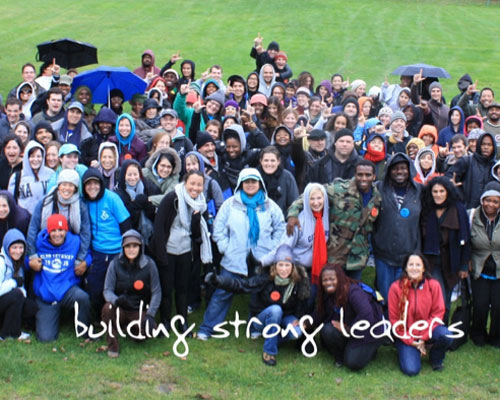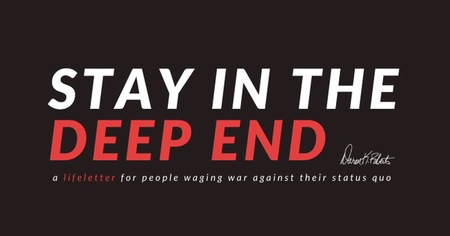I'm close to 10 years into leading others and am on an ongoing quest to figure it out.
I do have a happy, healthy, tribal team who achieves sky-high results each year in the work we do. Our company turnover is less than 3 percent, where the national industrywide percentage is close to 15 percent. My team alone has been with the company an average of seven years, with over 50 percent of the team having had two growth-based promotions in their time here.
I don't have all the answers, but I have my journey and I'm passionate about sharing it. While exploring this topic, I reached out to my team to hear examples on how I help build their leadership. I thought I'd play with an unconventional spin on sharing the information, and give you a few key elements straight from their perspective.
Check it out.
Expect & Embody: If you don't wake up with the belly fire to do the work you are doing, then they probably won't feel/share/see/embody it, either. Accompany this embodiment with sharing clear expectations on critical assignments and goals impacting your work. Then follow up to ensure they are being met.
From the team:
- She expects excellence from herself, and so encourages such from those she leads. She pushes for the team and myself, to push ourselves to be well-rounded leaders.
- She leads by example. You can always count on her words and her actions to be aligned.
- She pushes me to do better. She calls me out when I overlook my own leadership, my stake and my role.
- She holds us to high expectations while keeping us in a constant state of growth and progression.
Provide: Meet their needs. Provide what they need to be successful, whether that is communication, clarity or the literal tools to accomplish task. Engage in whatever process they need to come to a conclusion or understand the task at hand. Give them context. Take the time to explain the why.
From the team:
- She has never told me that "this is just the way it is ..." She explains. She welcomes questions and creates a relationship where she supports in connecting the dots and seeing the bigger picture.
- She meets our needs. I need to know the whole picture in order to understand my role in it. She provides as much clarity as she is able, when she is able.
- She responds to our needs while balancing the push and pull of moving us all forward ... while making us feel taken care of along the way.
Reach: We will all stay where we are comfy, unless pushed to reach further. This is when growth happens. Understand each of your team members—their strengths and areas of growth. Then amplify their strengths and give them "reach assignments" to push them in their areas of growth. Be there to catch/support/cheer when they are done, so you can process and maximize the lessons and the growth together.
From the team:
- Amanda's management style helps me channel my energy and strengths into concrete steps toward the right direction. It helps me with being REAL about not only what I am capable of doing now, but also what I can grow my current capabilities into.
- She pushes us to be well-rounded leaders, both administratively and with our interpersonal communication.
Trust—In Both Directions: An open trust and communication channel is essential when working together to achieve goals. Trust is sometimes broken. Taking the essential steps to repairing it is critical to your working relationship and the upward movement of the team. When and if you stop trusting someone on your team, it's time to consider making a change.
From the team:
- She trusts me. She creates an environment where there is healthy debate, push-back and thought-provoking decision making.
- She trusts us. She feels very comfortable including others in the process.
- Honest and Integrity. You always know who you are dealing with when you talk to her.
I hope getting the team's word on what's working in our community is helpful to you. I encourage you to open yourself up to asking your team as well. Digging into communication, vulnerability and transparency is a whole other article (or two ... or three), but may be the start of an important step in your leadership journey.
Additional Resources:
Simon Sinek
The Servant
Tribal Leadership
The Speed of Trust
Amanda Meeson is Vice President of Programming at The Leadership Program.




